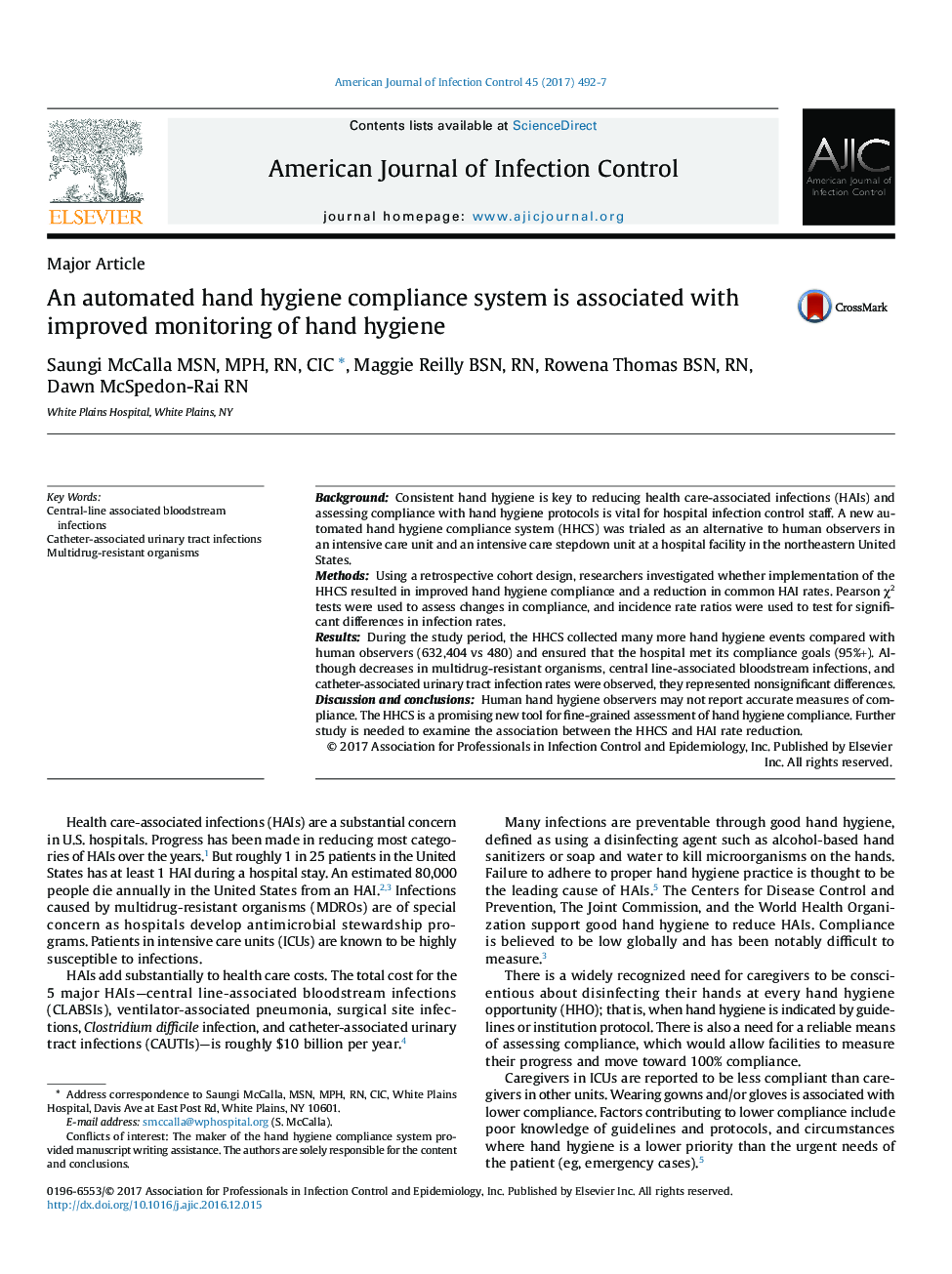| کد مقاله | کد نشریه | سال انتشار | مقاله انگلیسی | نسخه تمام متن |
|---|---|---|---|---|
| 5566862 | 1563445 | 2017 | 6 صفحه PDF | دانلود رایگان |

- A community hospital in the northeastern U.S. decided to trial an automated hand hygiene compliance system (HHCS) in its ICU and ICU stepdown units as an alternative to human observers.
- The HHCS captures data 24/7, which human observers cannot do, for logistical reasons.
- During the study period, the HHCS collected many more hand hygiene events compared to human observers (632,404 vs 480) and ensured that the hospital met its compliance goals (95%+).
- The hand hygiene compliance results achieved with the system met the imposing compliance goal set by the hospital without the limitations of human observers such as the Hawthorne effect.
- Decreases in MDRO, CLABSI, and CAUTI infection rates were observed during the study period, but because the differences were not significant, further study is needed to examine the association between the HHCS and HAI rate reduction.
BackgroundConsistent hand hygiene is key to reducing health care-associated infections (HAIs) and assessing compliance with hand hygiene protocols is vital for hospital infection control staff. A new automated hand hygiene compliance system (HHCS) was trialed as an alternative to human observers in an intensive care unit and an intensive care stepdown unit at a hospital facility in the northeastern United States.MethodsUsing a retrospective cohort design, researchers investigated whether implementation of the HHCS resulted in improved hand hygiene compliance and a reduction in common HAI rates. Pearson Ï2 tests were used to assess changes in compliance, and incidence rate ratios were used to test for significant differences in infection rates.ResultsDuring the study period, the HHCS collected many more hand hygiene events compared with human observers (632,404 vs 480) and ensured that the hospital met its compliance goals (95%+). Although decreases in multidrug-resistant organisms, central line-associated bloodstream infections, and catheter-associated urinary tract infection rates were observed, they represented nonsignificant differences.Discussion and conclusionsHuman hand hygiene observers may not report accurate measures of compliance. The HHCS is a promising new tool for fine-grained assessment of hand hygiene compliance. Further study is needed to examine the association between the HHCS and HAI rate reduction.
Journal: American Journal of Infection Control - Volume 45, Issue 5, 1 May 2017, Pages 492-497